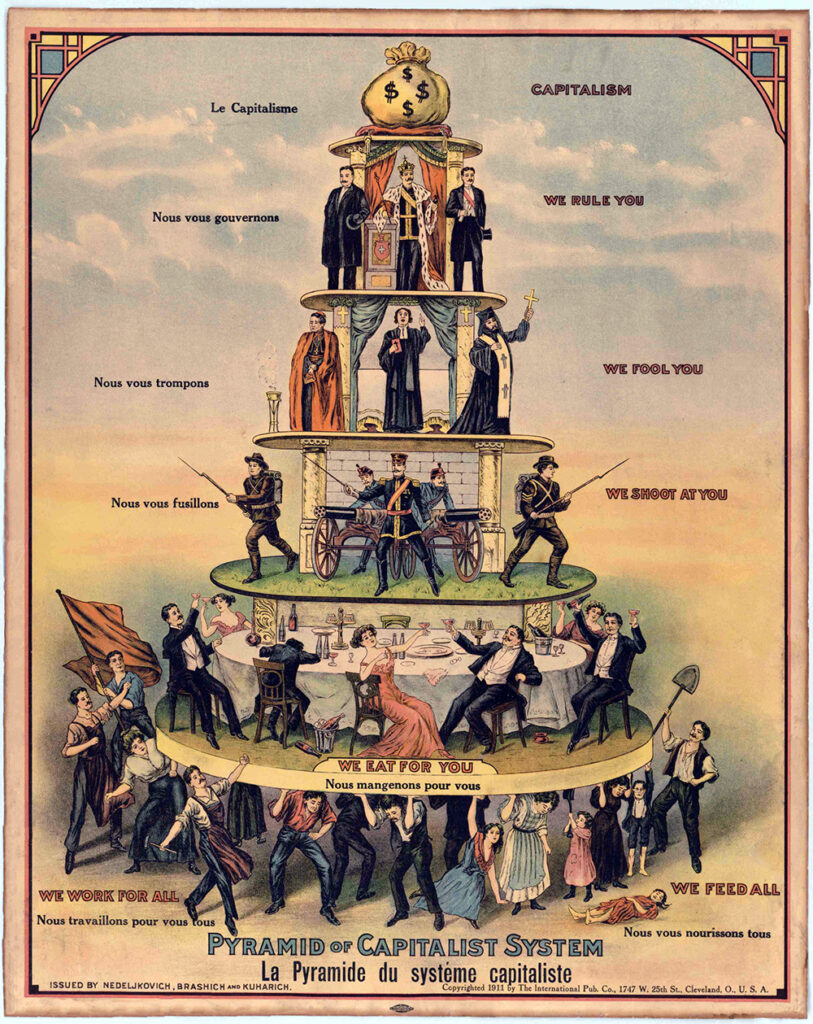
As an anti-socialist, anti-communist, and a man who wants heavily regulated capitalism, I found it utterly funny that after the Velvet Revolution in Czechoslovakia, the new regime did exactly what new regimes do – blame all of its own mistakes on the preceding regime.
So the old regime didn’t have any benefits, only liabilities. So Institute for the Study of Totalitarian Regimes along with the Museum of the Communist Crimes were established.
No problem with it. It is absolutely deserved, but since both communists and capitalists were right when describing the negatives of each other, I am highly convinced we need an institute for studying crimes of the current regime. Now let me take you on a brief route.
1. We have certain IQ
2. We have certain creativity
3. We have certain talent predispositions
4. We have personalities we basically cannot change (motivation is a part of it)
5. We were born to different socioeconomic background (ghetto, lower class, middle class, upper class, 1 %) that predestines our attainment
6. If you were beaten as a child you will have limited short-term memory (and limited short-term memory predisposes you to long-term memory which is crucial in the formal educational system)
7. You are integrated into a specific economic system (with certain GDP, certain average wages)
8. You have certain access to education
9. Social network and connections (the social networks and connections an individual has can open doors to job opportunities, mentorship, and valuable information; people with extensive social networks often have an advantage in their career and personal pursuits)
10. There is income inequality
11. Poor economic mobility
12. Poor financial literacy
The communists had had people tortured, killed, and incarcerated. Uttermost despicable crimes. But now let me tell you the story of a fictional man called Josef Novák. He was born in 1959 in communist Czechoslovakia. His parents were poor, both of them had low IQs, zero talents, and their kids were frequently beaten, but they gave them a pretty good hardworking mentality. Josef had a steady job, low on social prestige level. Despite all the obstacles (food shortages, for example) of the communist regime, his life was pretty good. Now, the Velvet Revolution started changing the orders he knew. He had busted his head into cyclical unemployment (it occurs with changes in economic activity over the business cycle; during an economic downturn, a shortfall of demand for goods and services results in a lack of jobs being available for those who want to work). The competent officials were inept in providing him with the right job (if it was available at all), and he started seeing alcohol as an escape, but he didn’t drink. While his parents died and his sister wasn’t successful in capitalism as well, he has become homeless. Lowly educated, he started suffering from depression. Given his low education and IQ, he didn’t seek psychiatric help and tragically ended his life jumping under a train.
So yes, Nazis, communists, and socialists were bad, but capitalism left hundreds of millions of people in poverty, deprived them of their dignity, destroyed their life completely, and starved them to death. So we have people absolutely brutalized by capitalism. So what about the museum?
Entrance (the entrance would feature a large, eye-catching sculpture or installation that symbolizes the dual nature of capitalism, with elements of prosperity and adversity intertwined)
Historical timeline
Income inequality gallery (from blue-collar to white-collar to the super-rich owning everything)
Exploitation gallery
Child labor exhibit
Environmental impact
Financial crisis corner
Poverty gallery
Short-term focus zone (capitalism often emphasizes short-term profit over long-term sustainability and societal well-being, leading to decisions that prioritize immediate gains at the expense of future stability)
Politics based on big money (human society is ridden with patron-client relationships but in communism, they were based on power, and some material advantages, but in capitalism, only the richest will win)
Consumerism (some say full employment in socialism was redundant because some of the jobs weren’t needed (but it had a social cause); but in capitalism there exist so many jobs and even economic sectors that are pure debauchery, not needed at all)
Brain drainage gallery (the best brains doing senseless work)
Debt zone
Job insecurity gallery
Housing crisis zone
Suicide gallery (of course, suicides are lower in capitalism due to the availability of psychiatric care, but some aspects of capitalism also encourage suicides)
Corporate influence hall
Unemployment hall
Modern slavery zone
Homelessness zone
Lobbyists gallery
Organized crime gallery (Czechoslovakian regime really didn’t have organized crime)
Socio-pathological phenomena (more domestic violence, higher murder rate, substance abuse and so on – much more prevalent in capitalism than socialism)
Market deformity section
Oligarchy gallery
Financial scandals (the world has witnessed numerous financial scandals linked to capitalism, such as insider trading, accounting fraud, and Ponzi schemes; these white-collar crimes can lead to enormous financial losses for investors and undermine trust in financial markets, highlighting the corruptibility within capitalist systems)
Corruption hall (the fraction of American GDP gets stolen)
Interactive Experiences (throughout the museum, interactive kiosks and activities would engage visitors in discussions about capitalism’s complexities; interactive quizzes, surveys, and debates would encourage critical thinking and reflection)
Testimonials and personal stories (throughout the museum, real-life stories of individuals impacted by capitalistic crimes would be prominently featured; these personal accounts would humanize the issues discussed and help visitors connect on a personal level)
Leave a Reply